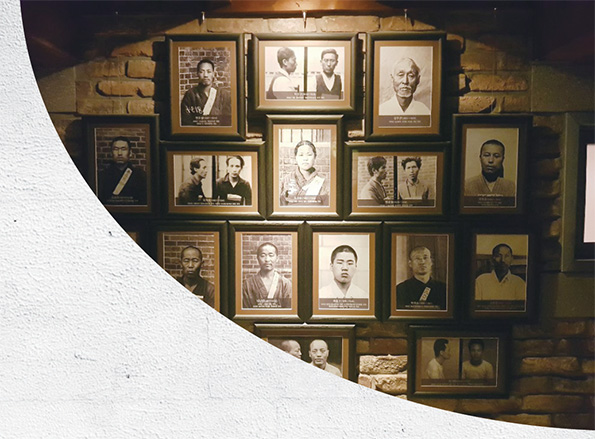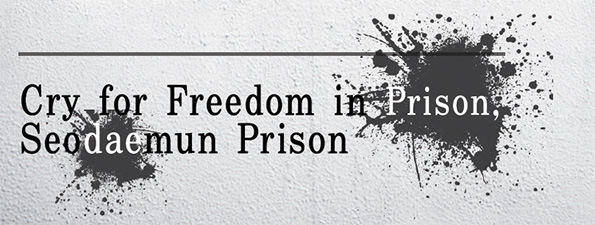Koreans have continued partaking in voluntary movements, like the independence movements during the Japanese colonial era, pro-democracy movements, and candlelight vigils. In the Japanese boycott, Koreans may be participating in movements in different ways than in the past. How did the independence activists protect Korea in the past? Let’s look back on the important meaning of the independence movements at Seodaemun Prison. -Ed.

Seodaemun Prison was named Gyeongseong Prison by Japan at the end of the Korean Empire. It was the largest modern prison at that time. Many Koreans who fought against Japan to restore national rights were imprisoned there. After Koreans gained independence, the Korean government used the prison to imprison pro-democracy activists until 1987. In 1998, it was reopened as a historical site to commemorate the 50th anniversary of the government’s formation. CBT reporters were able to visit the Exhibition Hall, the Central Prison Building, two Prison Buildings 11 and 12, the Engineering Work Building, the Leper’s Building, the Reverence Monument, the Execution Building, the Corpse Removal Exit, Gyeokbyeokjang(the Exercise Facility) and the Women’s Cells. Seodaemun Prison has a structure that rotates to the right from the main building, and large Korean flags are hanging all over the place. Many families visit for their children’s education, and adults constantly use the prison to teach their children about its history.
The Exhibition Hall is used as collection room, conference hall, and interrogation room. Judicial records about the Japanese colonial era, historical records of the independence movements and an entire model of Seodaemun Prison are displayed there. On the 2nd floor, there are materials related to the army, the causes of justice and the independence movements. Among them, the space of remembrance is impressive, displaying the prisoner records of the independence activists. There is a room with 5,000 photos of many people who were hurt by beatings or torturing. There is a photo of Yoo Gwan-soon, who people know well, and in the picture, she is also swollen from beatings. She died in prison from torture, not from the death penalty.
The torture chambers are in the basement of the Exhibition Hall. The torture chambers are vividly reenacted with wax figures. There is a water torture chamber, where a wax officer is pouring water on the wax prisoner who is hanging upside-down. The people who were tortured died painfully because their lungs were full of water. Japanese officers stabbed prisoners’ nails and mouths with thin, sharp sticks so prisoners blacked out because of the pain. Other prisoners next to the physical torture rooms had to wait while listening to the prisoners’ screams. The officers sometimes put prisoners into boxes full of nails and then shook the boxes. Wall-boxes that kept people from moving are also displayed. Japan tried to exterminate not only the prisoners’ lives but also their spirits through these tortures. However, in spite of these brutal methods, their desire for independence only got hotter. The prison, which could only originally hold 500 people, was expanded to accept 3,000 people. Visitors can hear the recorded chants of ‘Hurray for the independence of Korea, in the underground solitary confinements. The independence activists continued their independence movements in prison.
The Central Prison Building is connected to Prison Buildings 10, 11 and 12. Visitors can only enter Prison Buildings 11 and 12. Visitors can see a wax police officer when they look at the ceiling while walking along the hallway, and they can experience solitary confinement and pae-tong, which was a device that let the prison officers know if an emergency happened. Solitary confinement completely disconnects the prisoners from communication with other people. There aren’t even toilets in there, so prisoners in solitary confinement had to use their cells as bathrooms.
The brutal history of Seodaemun Prison isn’t finished yet. The democratic activists’ struggle against the dictatorship after Korean independence are explained through the pictures and texts. The family of Lee So-sun, a democratic activist, were activists who fought for a great cause for three generations. Her father, Lee Sung-jo, was an activist against Japanese colonialists during his rural movements against Japanese colonialism. Her son, Jeon Tae-il, was a labor activist. There are many items used by prisoners displayed in the Central Prison Building. The prisoners were given different sizes of bowls and portions of rice depending on their rank after hard labor, and they were forced to make supplies needed for prisons and military units in the Engineering Work Building.
Separated from the other buildings, there is a Leper’s Building that was used to isolate prisoners with leprosy. There is also an Execution Building next to a Reverence Monument that is engraved with the independence activists’ names. There is a tree called Miru of Grief in front of the Execution Building. It is named after the patriots who would attempt to hold on to it as they were being taken to the Execution Building. When visitors exit here, they can find the Corpse Removal Exit, the door for carrying out corpses. In front of the Corpse Removal Exit, there is a fan-shaped gyeokbyeokjang, for exercising prisoners, with partitioned walls installed to keep them from talking each other.
Lastly, there are the Women’s Cells, which consist of about 8 cells. Among them, many female activists were jailed during the March 1 Independence Movement. Yoo Gwan-soon, a patriotic martyr was also imprisoned in there. The room is surrounded by five mirrors and the pictures of the female independence activists are reflected many times in the mirrors. About 10 women were jailed here because they were members of a neoclassical council. As many as 5,000 female students took part in a peaceful demonstration, and 20 of them were jailed on Jan 15th, 1930. This peaceful demonstration was under the leadership of the neoclassical council.
According to statistics by the Ministry of Patriots and Veterans Affairs, only 15,000 people of 150,000 independence activists’ descendants are receiving state support, and 72.5% of them are receiving less than 2 million won per month. Koreans need to reflect on the nation that our parents fought hard to retain.
By Jung Jin-ju l asd030@cbnu.ac.kr
By Ahn Min-joo l mj40@cbnu.ac.kr



 All
All Experience
Experience






 Jung Jin-ju&Ahn Min-joo
Jung Jin-ju&Ahn Min-joo











